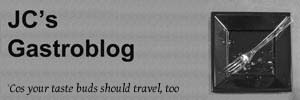A minor modification of a recipe from Culinaria Spain ; apparently a dish from the Balearics.
Planning
| serves: | 4 |
| preparation time: | 20 mins |
| cooking time: | 1½ hrs |
Ingredients
- 2 rabbits, cut into portions
- 125ml olive oil
- 2 onions, peeled & chopped
- 6 cloves garlic, chopped
- 1 tbs flour
- 250g tomatoes, skinned, deseeded & chopped
- 250ml white wine
- 250ml water
- 150g ground almonds
- 4 sprigs thyme
- 1 large bay leaf
- 1 tbs flaked almonds
- 1 tbs chopped parsley
- salt & pepper
Method
Heat the oil in a large flame proof casserole and brown the rabbit pieces lightly on all sides, seasoning them with salt & pepper as you go. Do them in batches to avoid over crowding the pan and remove them to a plate as they are done.
Add the onions to the same pan and fry them for about 5 minutes until soft but not coloured. Stir in the chopped garlic and fry for a minute more. Sprinkle in the flour and mix well, then add the chopped tomatoes and mix well together. Now stir in the wine and water and, when all is well amalgamated, stir in the ground almonds, thyme and bay leaf and season with salt and pepper. Return the rabbit pieces to the pan and bring to simmering point. Cover and cook gently over a low heat for about an hour, stirring occasionally to prevent the almonds burning on the bottom of the pan.
Cooking time is likely to depend upon the age of your rabbits, so check the rabbit back legs and, if necessary, cook a little longer until they are tender.
Serve sprinkled with the parsley and flaked almonds.
